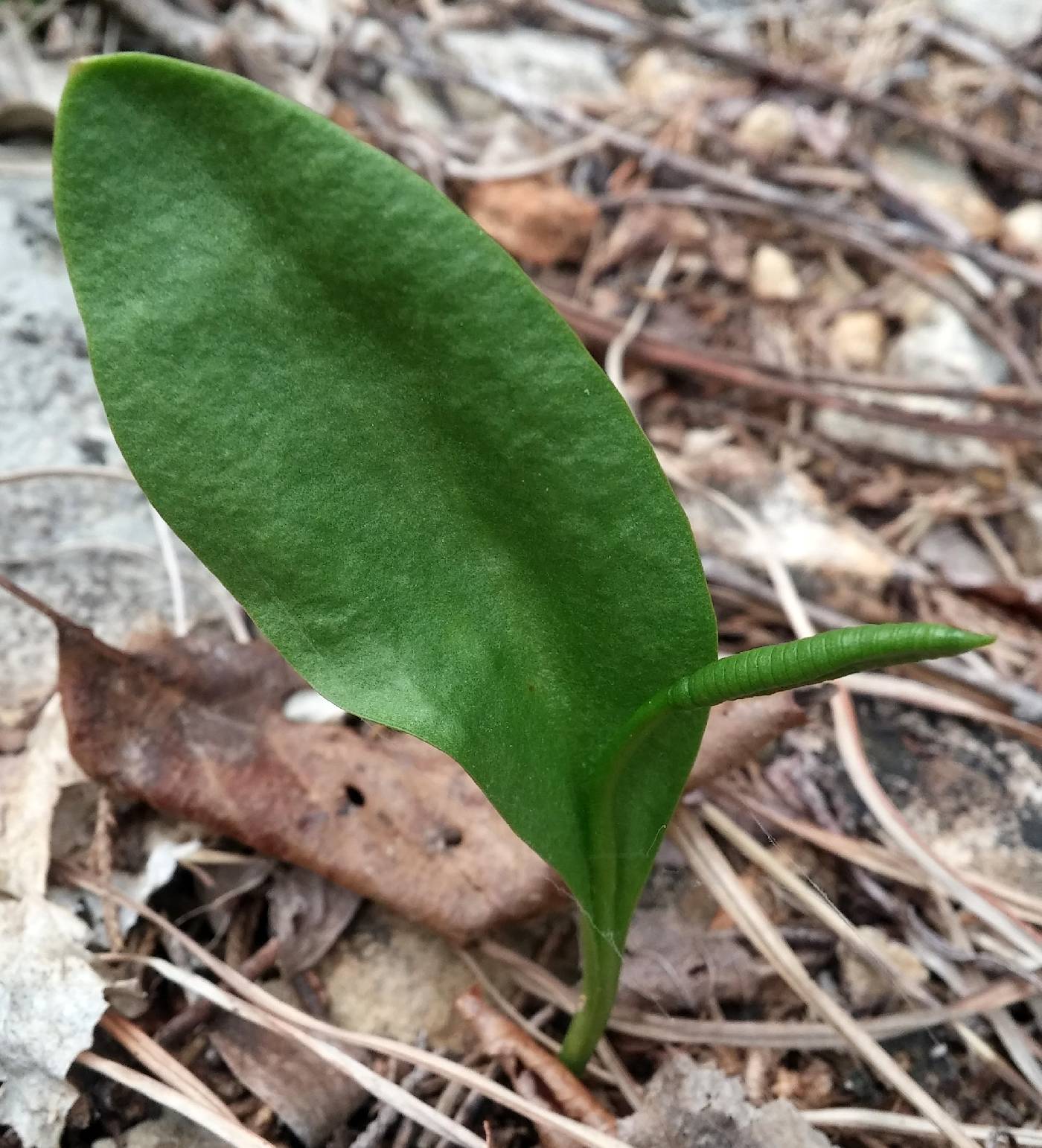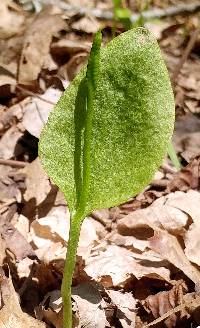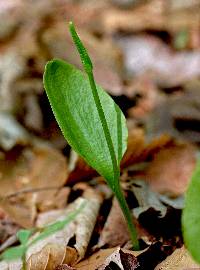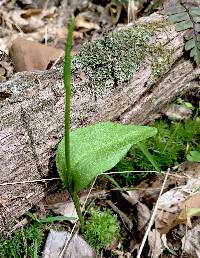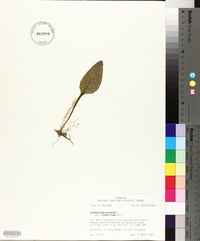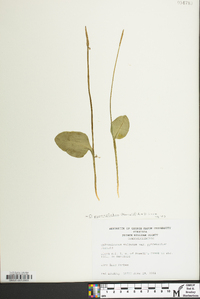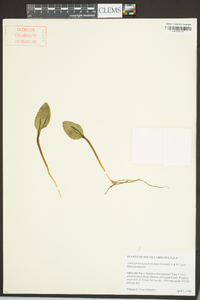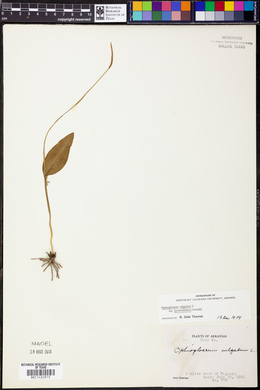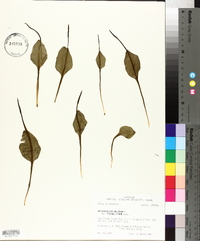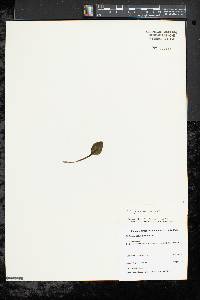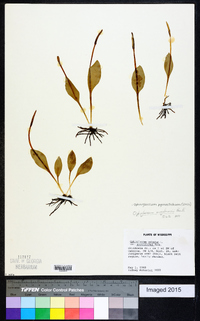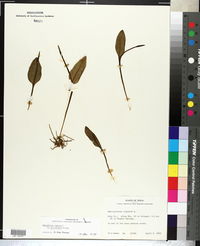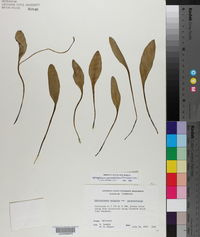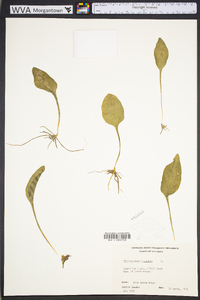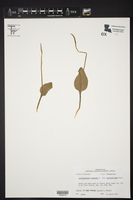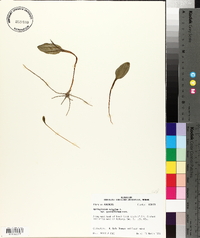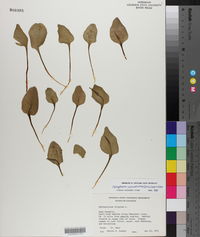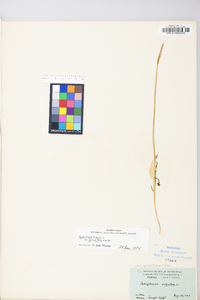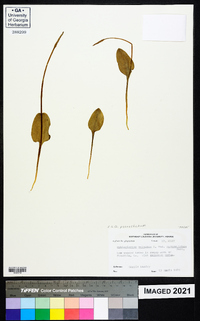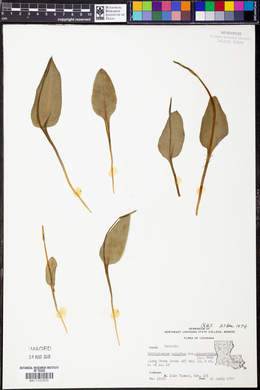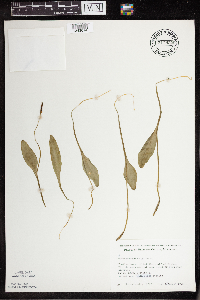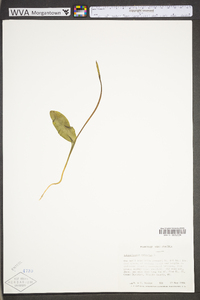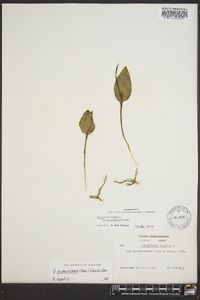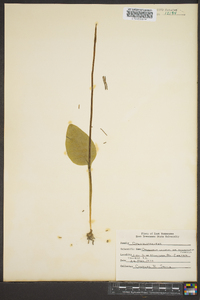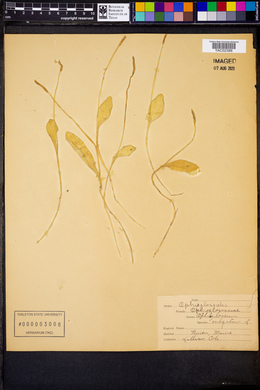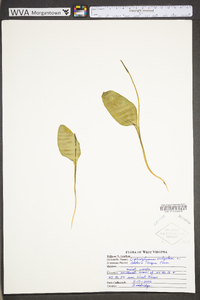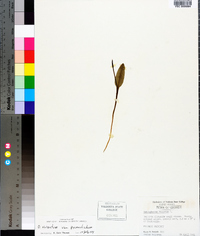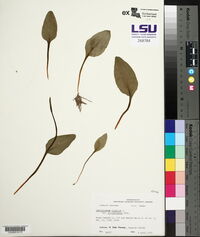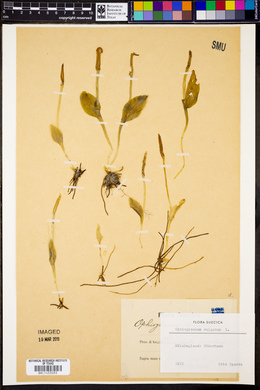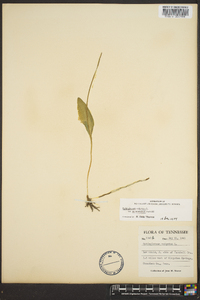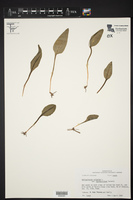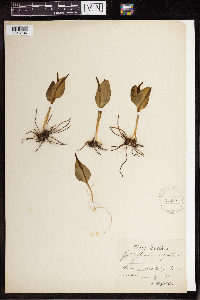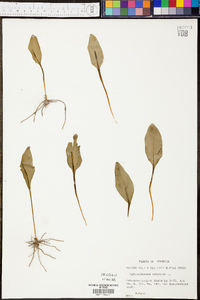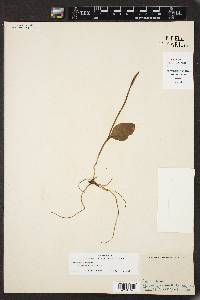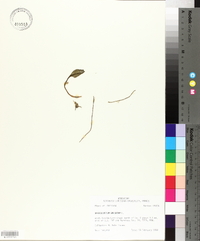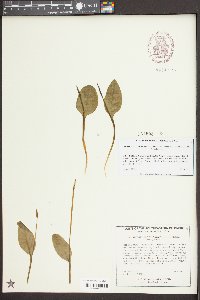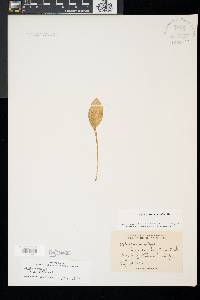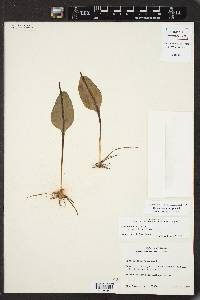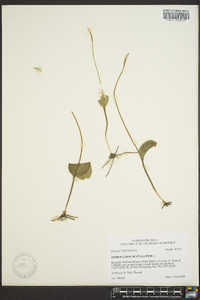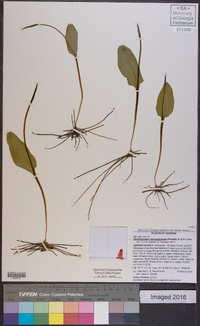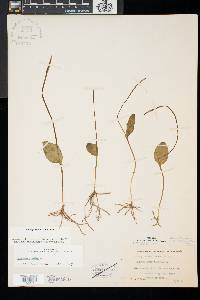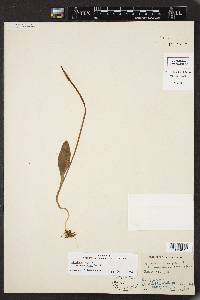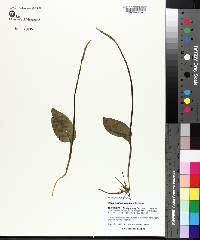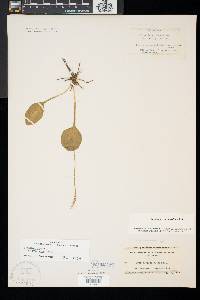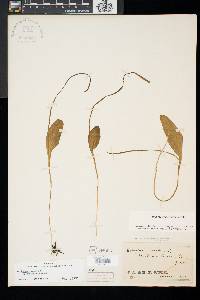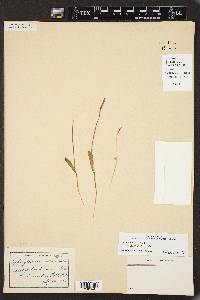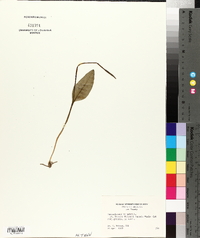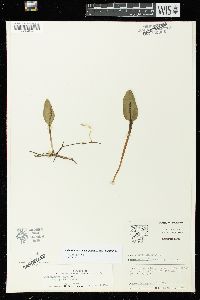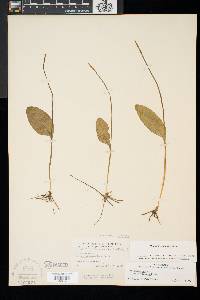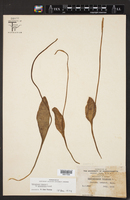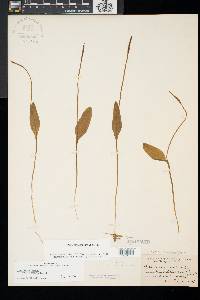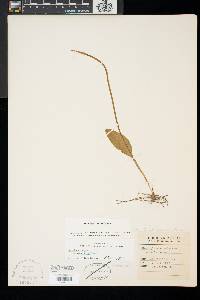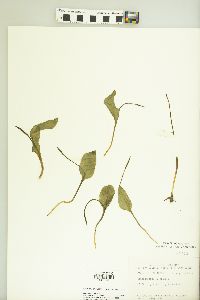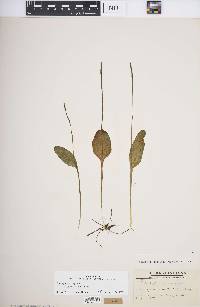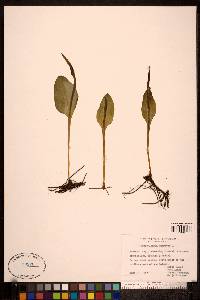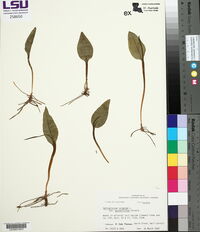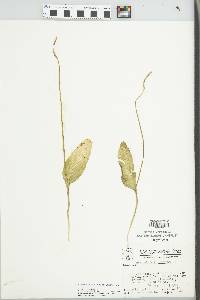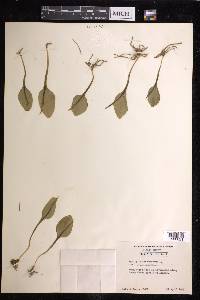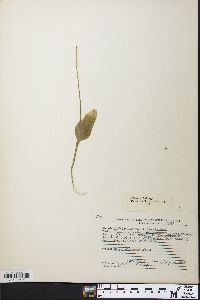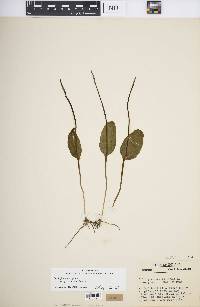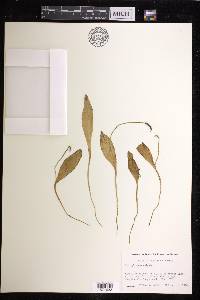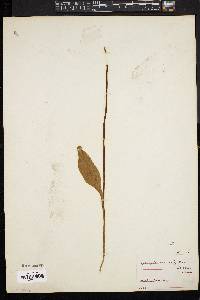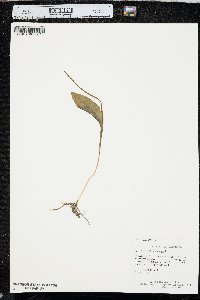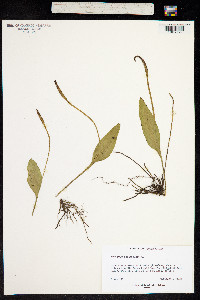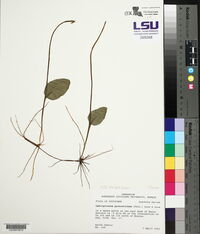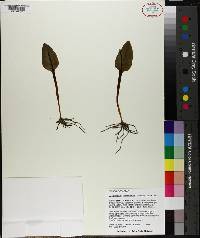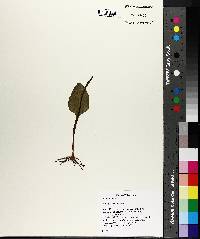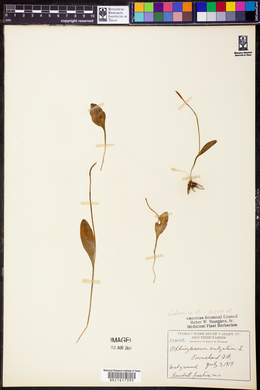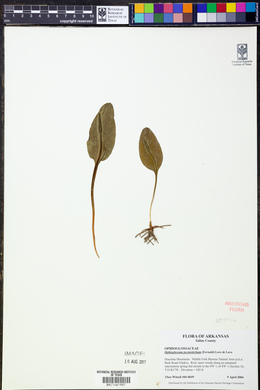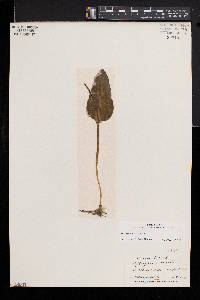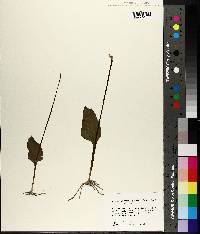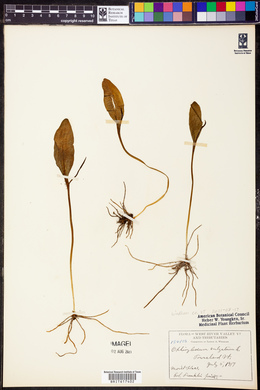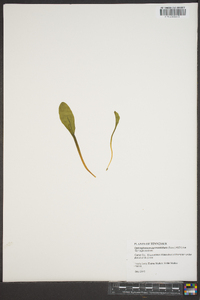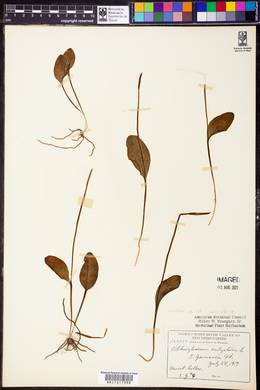
|
|
|
|
Family: Ophioglossaceae
Southern Adder's-Tongue, more...southern adderstongue
[Ophioglossum pycnostichum (Fern.) A.& D. Löve, moreOphioglossum vulgatum var. pycnostichum Fern.] |
Roots to 20 per plant, 0.3-0.9 mm diam., producing proliferations. Stem upright, to 1 cm, 3 mm diam., leaves 1 per stem. Trophophore stalk formed abruptly at base, to 5mm, sometimes more, 0.05 times length of trophophore blade. Trophophore blade erect to spreading, usually plane when alive, dark green, somewhat shiny, mostly ovate to ovate-trowel-shaped, widest in proximal half, to 10 × 4cm, firm, herbaceous, base tapering abruptly, apex rounded; venation complex-reticulate with included free veinlets in areoles. Sporophores arising at ground level, stalk 2-4 times length of trophophore; sporangial clusters 20-40 × 1-4 mm, with 10-35 pairs of sporangia, apiculum 1-1.5mm. 2 n =ca.1320. Leaves appearing spring-early summer. Shaded secondary woods, rich wooded slopes, forested bottomlands, and floodplain woods, south of Wisconsin glaciation; 0-800m; Ala., Ariz., Ark., Del., Fla., Ga., Ill., Ind., Ky., La., Mich., Miss., Mo., N.J., N.C., Ohio, Okla., Pa., S.C., Tenn., Tex., Va., W.Va.; Mexico; Eurasia. In addition to characteristics given in the key, Ophioglossum vulgatum differs from O . pusillum in having an unusually persistent leathery basal leaf sheath (B.W. McAlpin 1971; W.H. Wagner Jr. 1971b) rather than an ephemeral one and in having smaller spores (mostly 35-45µm in O . vulgatum compared with 50-60 µm in O . pusillum ). The chromosome number of O . vulgatum in India and Europe has been reported as 2 n =480, and that may be the number of most North America populations, which are small spored. In the Appalachians, however, a distinctive large-spored form has a chromosome number of 2 n =ca. 1320.
Blade widest below the middle, more abruptly rounded to the base, dark green, firm; basal sheath leathery and ±persistent; spores avg 35-45 microns; low woods and flood plains, southern, mostly s. of the glacial boundary, s. to Fla. and Mex. (O. pycnostichum) Gleason, Henry A. & Cronquist, Arthur J. 1991. Manual of vascular plants of northeastern United States and adjacent Canada. lxxv + 910 pp. ©The New York Botanical Garden. All rights reserved. Used by permission. Plants 7-35 cm; stipe (1.5-)6-13(-19) cm; lvs mostly solitary; blade flat, elliptic-oblong to ovate, rounded to obtuse or subacute, but not apiculate, mostly 4-8 נ(1-)2-4 cm, sessile or short-stalked; venation regularly areolate, the areoles all small with mostly free included veinlets, not enclosing secondary areoles; sporophore 1-5 cm נ2.5-4 mm on a stalk mostly 7-14 cm; sporangia 0.6-1.2 mm thick; 2n=960-1320. Circumboreal, in Amer. from N.S. to Wash., s. to Fla. and Tex. Two vars. with us. Gleason, Henry A. & Cronquist, Arthur J. 1991. Manual of vascular plants of northeastern United States and adjacent Canada. lxxv + 910 pp. ©The New York Botanical Garden. All rights reserved. Used by permission. From Flora of Indiana (1940) by Charles C. Deam Local in various habitats in the southern half of the state. It is always found in dense shade and most commonly associated with beech, especially in low beech and sweet gum woods. Ordinarily it seems to prefer a slightly acid soil. It has been found in Lake County by several collectors, where it is evidently rather frequent. I have a specimen collected by Edwin D. Hull near Liverpool, Lake County, which was growing under some shrubs in almost pure sand with cranberry. Mr. Hull found more than 30 fruiting specimens at this time at the place mentioned above. Besides the counties shown on the map it has been reported from Crawford, Harrison, and Wayne Counties. Markle (Proc. Indiana Acad. Sci. 1915: 357. 1916) in 1914 found near Gary, Lake County, many plants with more than one leaf. He reports "of a total of two hundred plants, selected at random, ninety-one had one leaf above ground, one hundred and five had two leaves, and four had three leaves". …… Indiana Coefficient of Conservatism: C = 4 Wetland Indicator Status: FACW |
This project was made possible in part by the Institute of Museum and Library Services [MG-70-19-0057-19].
Powered by Symbiota

